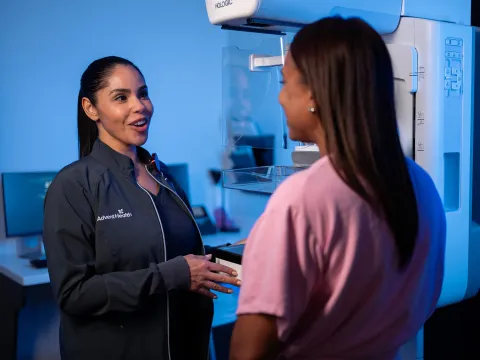- AdventHealth

Choose the health content that’s right for you, and get it delivered right in your inbox.
If you’re having concerning symptoms and/or test results, your doctor might recommend a biopsy if they have further questions that need to be answered more specifically. A biopsy can help them delve deeper into the root cause and lead to a definitive diagnosis.
What Is a Biopsy?
A biopsy is a procedure to remove a piece of tissue or a sample of cells from your body so that it can be tested in a laboratory. Imaging tests, such as computed tomography (CT) scans and magnetic resonance imaging (MRI), are helpful in detecting masses or irregular tissue, but they alone can't differentiate between normal and abnormal cells. For some illnesses, like most cancers, the only way to make an accurate diagnosis is to perform a biopsy to collect cells for closer examination.
Read on to learn about why biopsies are done, which different types there are and how they’re performed.
Why Are Biopsies Done?
Biopsies are most commonly done to look for suspected cancer. But they can be done to identify other conditions as well, such as anemia, certain blood cell conditions, Crohn’s disease and other inflammatory illnesses. They are helpful for providers to determine the best course of therapy for your condition once a diagnosis is made.
Some biopsies entail the removal of a suspicious polyp, lump or nodule in its entirety as a preventive or therapeutic measure.
Here are a few examples of when a biopsy might be recommended:
- A mammogram shows a lump or mass, indicating breast cancer may be present
- A mole on the skin has changed shape recently, showing possible melanoma
- A patient has chronic hepatitis, and it's important to know if they have cirrhosis of the liver
What Types of Biopsies Are There?
There are many different types of biopsies that check for specific conditions. Numbing medicine will be used if the biopsy is done on the skin or other sensitive area.
12 Common Types of Biopsies
Here are some of the biopsies health care providers may recommend. Almost all of them are performed with a needle to access the irregular tissue:
- Aspiration biopsy: also called a fine-needle aspiration; material is drawn out of a mass
- Bone biopsy: searches for bone cancer and may be performed via the CT scan technique or by an orthopedic surgeon
- Bone marrow biopsy: can identify blood diseases such as leukemia or lymphoma and is done via bone marrow collection in the pelvis bone
- CT-guided biopsy: a CT scan’s images help doctors determine the exact position of the needle in the targeted tissue
- Endoscopic biopsy: performed through a long, thin tube through a natural body orifice or a small incision to view the organ in question for abnormal or suspicious areas
- Gynecological biopsy: can include breast biopsy, cervical biopsy, endometrial biopsy and vulvar biopsy to look for cancers or better understand symptoms
- Kidney biopsy: a needle is inserted through the skin on the back into the kidney
- Liver biopsy: a needle is inserted into the liver through the skin on the belly, capturing liver tissue
- Prostate biopsy: multiple needle biopsies are taken at one time from the prostate gland
- Ultrasound-guided biopsy: an ultrasound scanner helps a doctor direct the needle into the lesion
- Skin biopsy: a “punch biopsy” is done using a circular blade to get a cylindrical sample of skin tissue
- Surgical biopsy: either open or laparoscopic surgery may be necessary to obtain a biopsy of hard-to-reach tissue (either a piece of or the whole tissue may be removed)
What Happens After a Biopsy?
After your health care provider gets a tissue sample, it's sent to a laboratory to be analyzed. The sample may be chemically treated or frozen and sliced into very thin sections. The sections are placed on glass slides, stained to enhance contrast and studied under a microscope.
The biopsy results help your health care provider determine whether the cells indicate cancer or another illness. If the cells are cancerous, the results can tell your care provider the type of cancer and how aggressive it is. This is called the cancer’s grade or stage, expressed as a number on a scale of one to four. The grade is determined by how cancer cells look under a microscope.
Usually, your biopsy results are available within a few days, though some results need more time to be analyzed. The results will help you and your health care provider come up with a plan of action for treatment.
The Image of Whole-Person Health Care
At AdventHealth, we can detect, diagnose and treat your condition with our full spectrum of clinical diagnostic and therapeutic medical imaging services. Our leading-edge tools help us diagnose conditions in their early stages when treatments are most effective. Once we get a clear picture of what’s going on, we can provide the treatments necessary to help you heal.
Learn more about our imaging services here. You deserve to feel whole.




